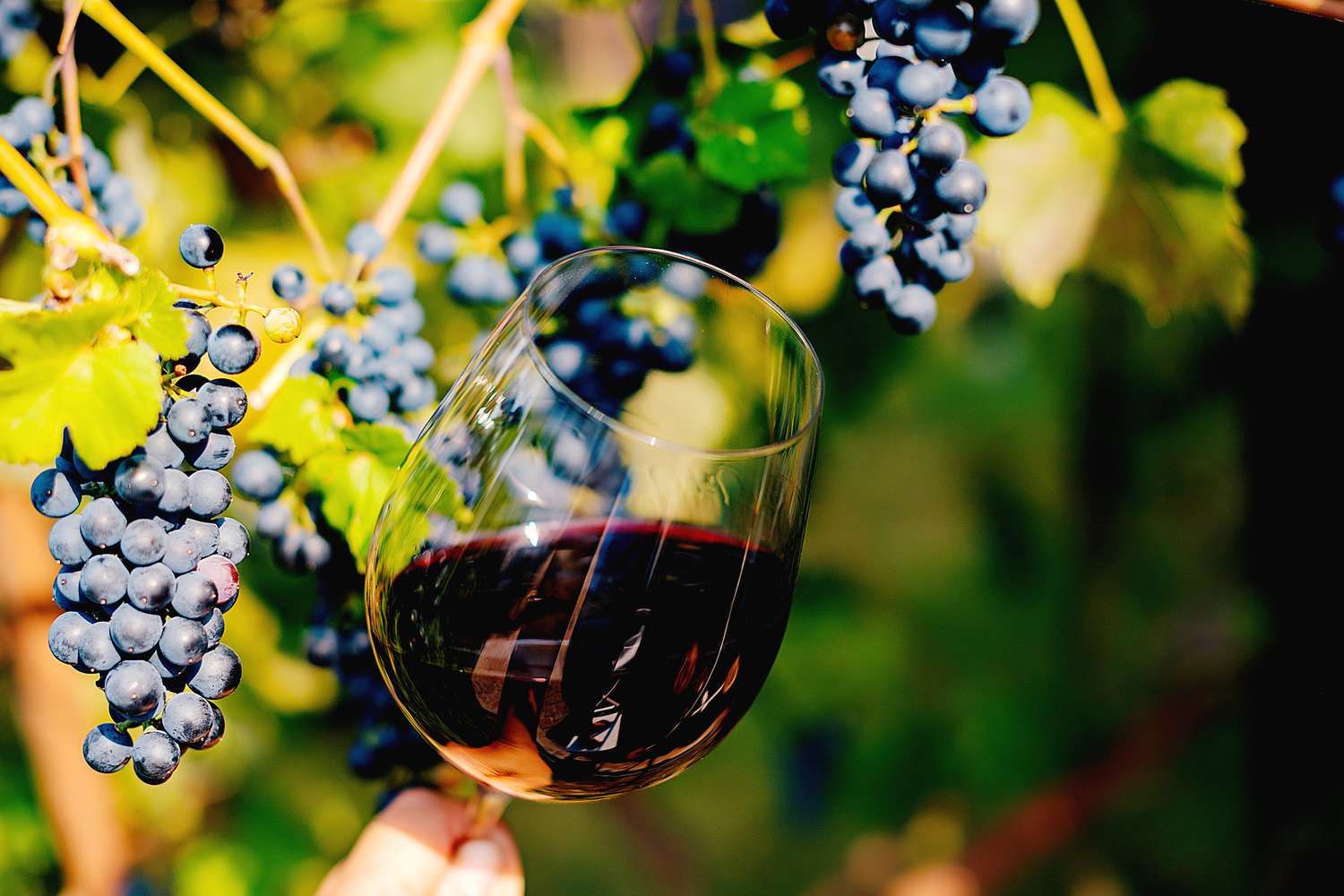
Looking for Lighter Wines? This Winemaking Technique Is Key to Finding Your Next Favorite Bottle
To pick a bottle of wine can often feel like roulette, especially when wine terms like “malolactic fermentation” and “carbonic maceration” are involved. However, if you understand a few key vinification terms, they can provide solid insight into a wine’s flavor profile.
“Whole cluster fermentation” is a common phrase in winemaking. It sounds simple enough, but what exactly does it mean? And how does it translate to a wine’s taste?
Whole cluster winemaking defined
“Whole cluster in winemaking refers to a winemaker’s choice to not destem fruit, meaning that the stem, an herbaceous plant part of the vine which connects the fruit to the plant, is included in the fermentation,” says Josh Bergström, owner and winemaker at Willamette Valley-based Bergström Wines.
The alternative to destemming, says Bergström, incorporates putting fruit clusters through a machine that removes the berry from the stem, which results in only the grapes being fermented.
Including whole clusters in fermentation isn’t always all or nothing.
“Whole cluster can mean 100% stem inclusion, or a smaller percentage of stem inclusion with the rest of the harvest being destemmed,” says Bergström.
Some winemakers will destem 50% of fruit prior to fermentation, then include the clusters of the other 50%, or any percentage in between. “Whole cluster inclusion can be anywhere from 1–100%, and it’s important that winemakers denote what percentage was included, as the results can be drastically different,” he says.
Courtesy of Getty Images
Does whole cluster wine taste different?
According to Chris Clark, beverage director at Oiji Mi and Bōm, whole cluster inclusion can affect a wine’s taste and structure. It can lighten up tannins and add a slight tertiary component to a young wine.
“Using whole clusters can add a layer of complexity and up the elegance of wines, while also reducing the fruit dominance of the finished wine,” says Clark.
Stem inclusion can add savory and herbaceous notes to a wine. That can include salty, tea-like, and umami aromas and flavors that grapes cannot often achieve on their own. “It also adds a certain high-quality tannic structure that lends for longer aging,” says Bergström.
The whole cluster vinification trend
Clark says that whole cluster inclusion is a relatively new trend. However, during pre-industrial winemaking, before the creation of destemmers, almost all wines were vinified with whole clusters.
Today, whole cluster fermentation is most common in red wine production. “However, some winemakers who make skin-contact or orange wines may choose to also use whole clusters during fermentation,” says Bergström.
Josh Bergström, owner and winemaker at Willamette Valley-based Bergström Wines
“It works very well with certain varieties, in certain regions, in certain vineyards, and in certain vintages. But forcing whole cluster fermentation on a variety or site that does not warrant it because ‘it’s cool’ is like forcing the square peg into the round hole. Futile.”
— Josh Bergström, owner and winemaker at Willamette Valley-based Bergström Wines
There are several ways that producers can incorporate whole clusters during fermentation. Sometimes it’s a hybrid of methods, where destemmed fruit and whole cluster fruit are layered in a way like lasagna or millefeuille.
“Many winemakers will put the whole clusters on top of the destemmed fruit, though others prefer to put the whole clusters at the bottom of the tank and cover them with the destemmed fruit on top,” says Bergström.
Some destem fruit and layer the bare stems back into the must. However, this doesn’t constitute whole berry fermentation, and the aromas and flavors typical to whole cluster fermentation won’t be achieved. “It does reintroduce an herbaceous element to the fermentation, though I would hesitate to qualify this technique as ‘whole cluster,’ rather than [just] stem inclusion,” says Bergström.
Bergström says that whole cluster fermentation should be employed strategically, not as an absolute. “It works very well with certain varieties, in certain regions, in certain vineyards, and in certain vintages,” he says. “But forcing whole cluster fermentation on a variety or site that does not warrant it because ‘it’s cool’ is like forcing the square peg into the round hole. Futile.”
How to drink whole cluster wines
Clark finds that whole cluster wines lend themselves well to gastronomic experiences, thanks to their lighter qualities.
“The wines of the newer adopters of whole cluster ferments tend to be brighter and more vibrant, leaving the spotlight more on the food, with the wine playing a supporting role,” says Bergström. He says these wines often benefit from being served slightly chilled.
5 bottles to try
2023 Bergström Cumberland Reserve Pinot Noir (100% whole cluster); $53
Medium-bodied and silky, with notes of ripe red berries, damp earth, and dried herbs. It’s produced from biodynamically farmed fruit and aged for 12 months in barrels.
2021 Simon Bize & Fils Bourgogne Rouge Les Perrières (100% whole cluster); $65
Flavors of cranberry, rose petal, and sweet spice, vinified with native yeasts and aged for 12 months in used barrels prior to bottling without fining or filtration.
2022 Pax North Coast Syrah (100% whole cluster); $42
Savory and ripe with flavors of red and black fruits, violets, and cracked black pepper, this wine is made from organically farmed fruit and aged for 10 months in used, 500-liter French oak puncheons.
2022 Eric Texier Brézème Côtes-du-Rhône Rouge (100% whole cluster); $40
Powerful and flavor-packed with notes of dark fruit, violets, and smoke, it’s made with organically farmed fruit and vinified/aged with native yeasts in open-top concrete tanks for 18-24 months. It’s bottled with no fining/filtration and minimal sulfur.
2022 Tatomer Santa Barbara County Pinot Noir (50% whole cluster); $32
Velvety and balanced, with lifted flavors of sweet red berries, cedar spice, and chalk. This bottling is crafted from fruit from Drum Canyon, Kick-on Ranch, and Sanford & Benedict.










